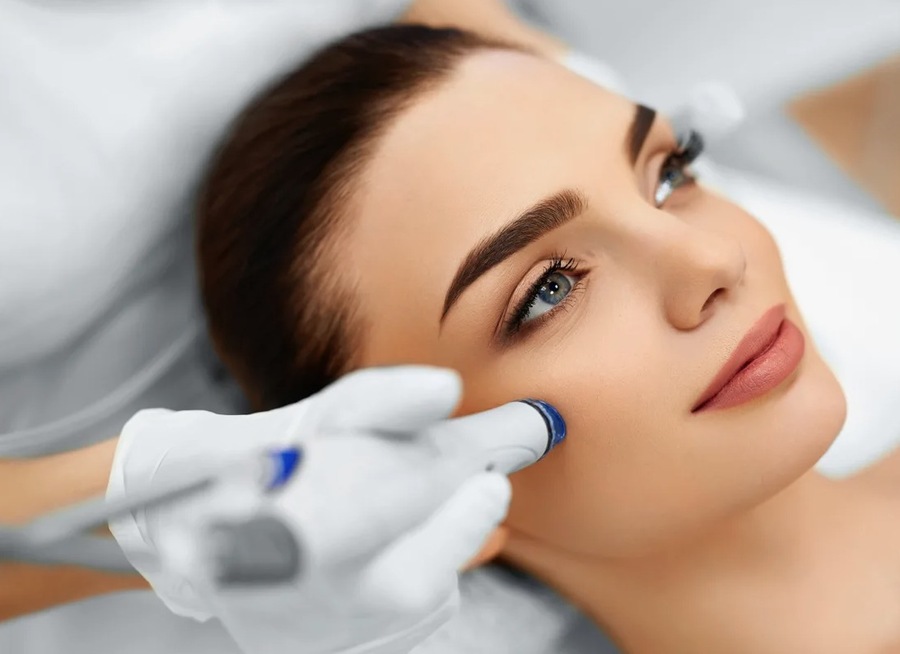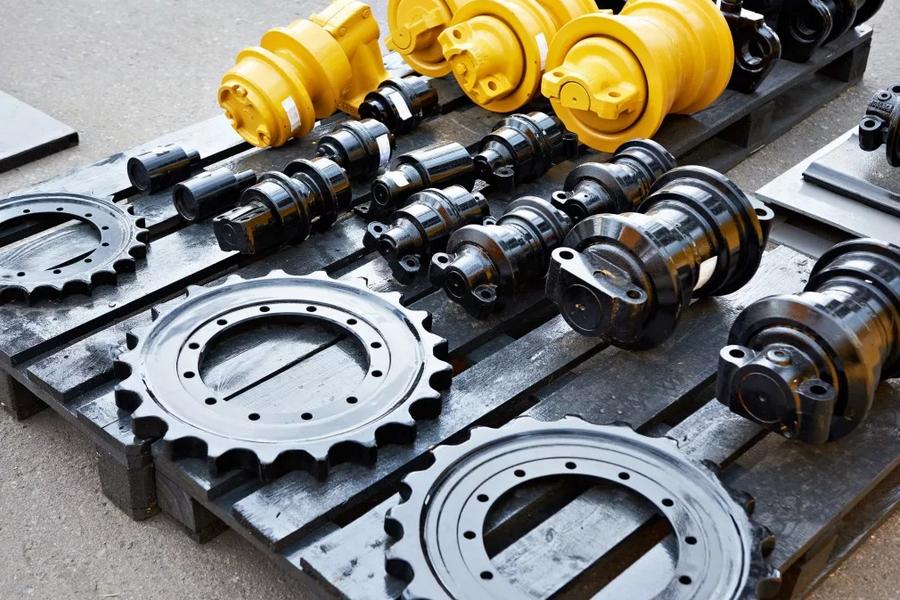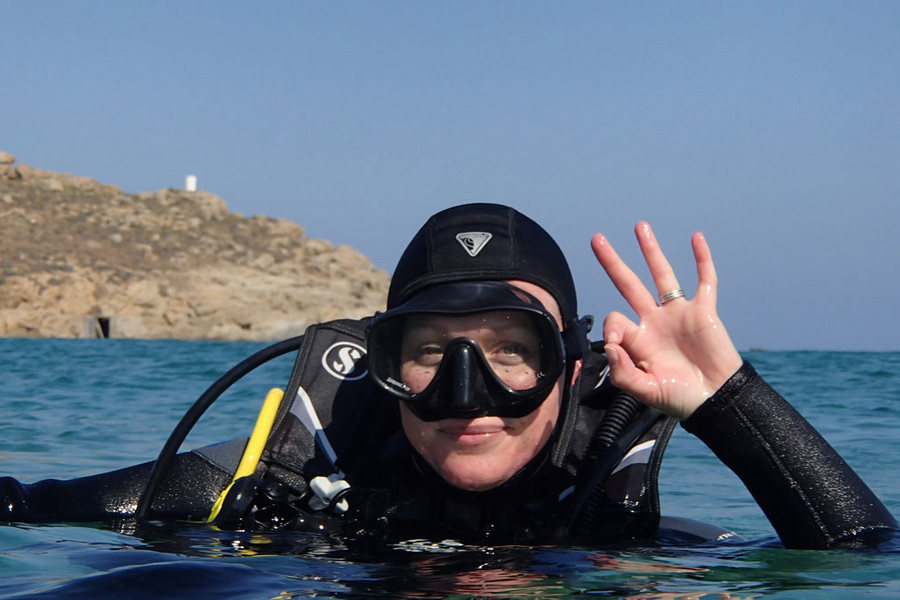Laser skincare treatment clinics such as ProDerma have revolutionized dermatology, effectively solving various skin concerns. Laser technology offers targeted and efficient results, from reducing fine lines and wrinkles to treating acne scars and hyperpigmentation. But how do you know if these treatments are right for you? This detailed blog explores the different types of laser skincare treatments, their benefits, potential risks, and costs, helping you make an informed decision.
Understanding Laser Skincare Treatments
Laser skincare treatments utilize focused light energy to target specific skin issues at a cellular level. The laser penetrates the skin to promote healing and regeneration. There are two main types of lasers used in skincare:
1. Ablative Lasers:
- Function: Ablative lasers remove the outer layers of the skin, promoting new skin growth and collagen production.
- Types: CO2 lasers and Erbium YAG lasers.
- Applications: Effective for deep wrinkles, scars, and severe sun damage.
- Downtime: Requires more recovery time due to the intensity of the treatment. Patients may experience redness, swelling, and peeling for up to two weeks.
2. Non-Ablative Lasers:
- Function: Non-ablative lasers penetrate the skin without removing layers, stimulating collagen production and tightening the skin.
- Types: Nd: YAG, Alexandrite, Diode, and Pulsed-Dye lasers.
- Applications: Ideal for treating fine lines, acne, rosacea, and minor pigmentation issues.
- Downtime: There is minimal downtime, making it convenient for busy individuals. Redness and swelling are typically mild and resolve within a few hours to a day.
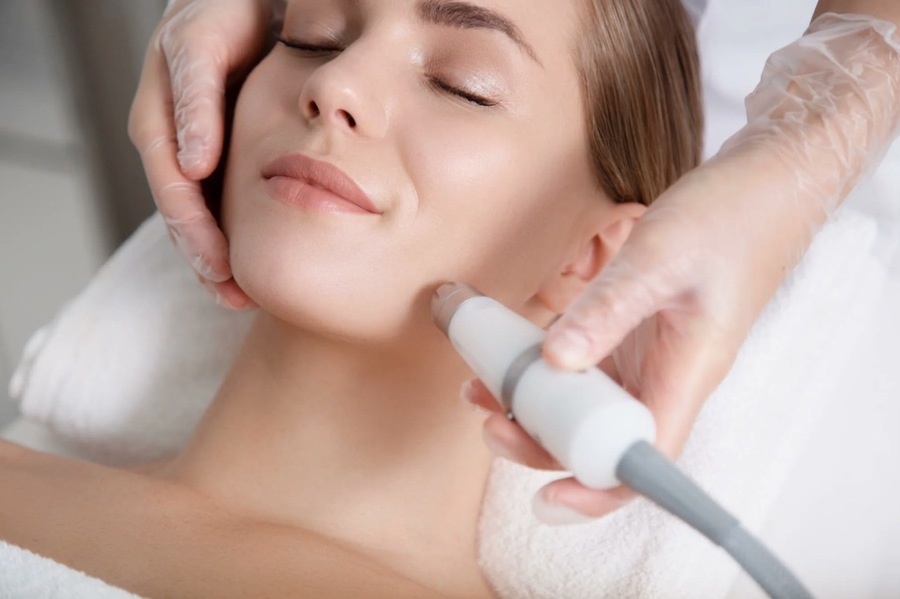
Types of Laser Skincare Treatments
1. Fractional CO2 Laser: Fractional CO2 lasers are among the most powerful treatments available, targeting the skin’s surface and deeper layers. This treatment addresses deep wrinkles, severe sun damage, and acne scars.
- Effectiveness: Studies show that Fractional CO2 laser treatments can reduce the appearance of wrinkles and scars by 50-70%.
- Procedure: The laser creates tiny micro-injuries in the skin, stimulating collagen production and promoting skin regeneration.
- Downtime: Typically, a week to ten days of recovery time. Patients may experience redness, swelling, and peeling.
- Price: AED 2,500-4,000 per session.
2. Erbium YAG Laser: Erbium YAG lasers are similar to CO2 lasers but are more precise and cause less damage to surrounding tissues. They are often used for fine lines, moderate wrinkles, and superficial skin issues.
- Effectiveness: Can achieve 40-60% improvement in skin texture and appearance.
- Procedure: The laser removes the outer layers of skin, promoting new, healthy skin growth.
- Downtime: Approximately one week. Redness and swelling are common during the healing process.
- Price: AED 2,000-3,500 per session.
3. Nd: YAG Laser:Nd: YAG lasers are non-ablative and used to treat deeper skin issues, such as vascular lesions, hair removal, and tattoo removal. They can also help with collagen stimulation for overall skin rejuvenation.
- Effectiveness: Significant reduction in vascular lesions and improvement in skin tone after multiple sessions.
- Procedure: The laser penetrates deep into the skin, targeting blood vessels and stimulating collagen.
- Downtime: Minimal to no downtime. Patients may experience mild redness.
- Price: AED 800-2,000 per session.
4. Alexandrite Laser: Alexandrite lasers are effective for hair removal and treating pigmented lesions. They offer fast results and are safe for most skin types.
- Effectiveness: Up to 90% hair reduction after several treatments.
- Procedure: The laser targets melanin in hair follicles or pigmented lesions, breaking them down.
- Downtime: Minimal, with slight redness lasting a few hours.
- Price: AED 600-1,500 per session.
5. Pulsed-Dye Laser (PDL): PDL is a non-ablative laser for treating vascular lesions like rosacea, spider veins, and port-wine stains. It works by targeting blood vessels without damaging the surrounding skin.
- Effectiveness: Significant reduction in redness and visible blood vessels after several treatments.
- Procedure: The laser emits a concentrated beam of light that blood vessels absorb, causing them to collapse and fade.
- Downtime: Mild bruising and redness for a few days.
- Price: AED 1,000-2,500 per session.
6. Diode Laser: Diode lasers are commonly used for hair removal and treating acne. They penetrate the skin deeply, targeting hair follicles and sebaceous glands.
- Effectiveness: Effective in reducing acne and providing long-term hair removal.
- Procedure: The laser targets and destroys hair follicles or reduces oil production in sebaceous glands.
- Downtime: Minimal, with slight redness and swelling.
- Price: AED 700-1,800 per session.
Benefits of Laser Skincare Treatments
1. Precision: Lasers offer unparalleled precision, allowing dermatologists to target specific skin issues without affecting surrounding areas. This minimizes the risk of damage and ensures effective treatment of problem areas.
2. Versatility: Laser treatments can address many skin concerns, from wrinkles and fine lines to acne scars, pigmentation issues, and unwanted hair. This versatility makes them popular for many patients seeking comprehensive skin rejuvenation.
3. Collagen Stimulation: Many laser treatments stimulate collagen production, essential for maintaining youthful, firm skin. Increased collagen helps reduce signs of aging and improves overall skin texture, providing long-lasting results.
4. Minimal Downtime: Non-ablative laser treatments offer the advantage of minimal to no downtime, allowing patients to resume their daily activities quickly. Even ablative treatments, while requiring more recovery time, provide significant results that can make the downtime worthwhile.
5. Long-Lasting Results: Laser treatments often provide long-lasting results, especially when combined with a good skincare routine. Patients can enjoy improved skin appearance for months or even years, making it a cost-effective option in the long run.
Potential Risks and Side Effects
While laser treatments are generally safe, they have potential risks and side effects. Understanding these risks is crucial before undergoing treatment.
1. Redness and Swelling: Temporary redness and swelling are common after laser treatments. Depending on the intensity of the treatment, these effects typically subside within a few hours to a few days. Cool compresses and gentle skincare can help alleviate these symptoms.
2. Pigmentation Changes: Some patients may experience changes in skin pigmentation, such as hyperpigmentation (darkening) or hypopigmentation (lightening). These changes are usually temporary but can be permanent in rare cases. Avoiding sun exposure and following post-treatment care instructions can minimize this risk.
3. Scarring: Although rare, scarring can occur, especially with ablative laser treatments. Choosing an experienced practitioner and following proper aftercare can minimize this risk.
4. Infection: There is a small risk of infection after laser treatments. Keeping the treated area clean and following post-treatment care instructions can help prevent infections. Contact your dermatologist if you notice any signs of infection, such as increased redness, swelling, or discharge.
5. Sensitivity to the Sun: Laser treatment makes skin more sensitive to sunlight. To prevent damage and pigmentation changes, using sunscreen and avoiding direct sun exposure is crucial. This precaution helps maintain the results and protects the skin from further harm.
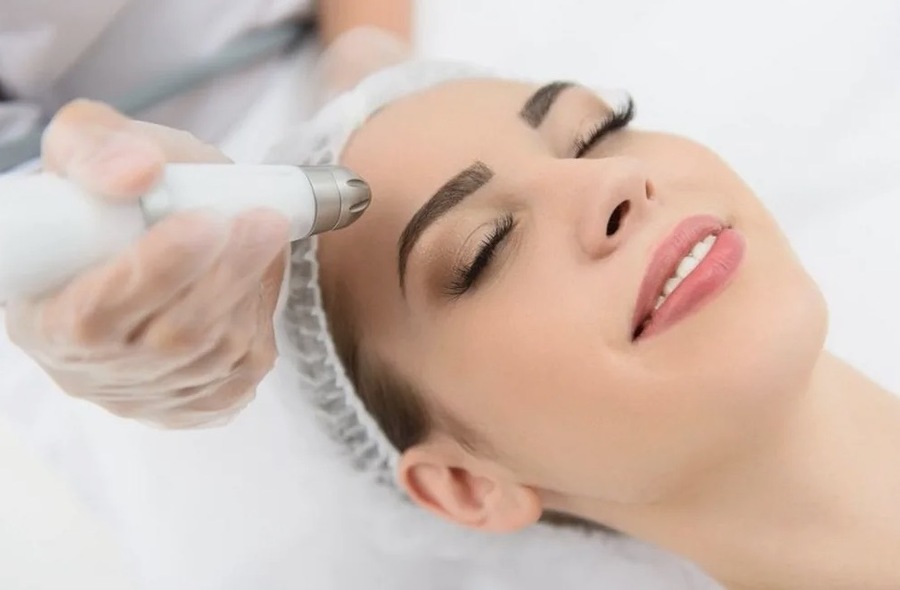
How to Prepare for Laser Skincare Treatments
Consultation: Consult a qualified dermatologist to discuss your skin concerns and goals. The dermatologist will evaluate your skin type and condition to determine the most suitable laser treatment.
Pre-Treatment Care:
- Avoid Sun Exposure: Protect your skin from the sun for at least two weeks before treatment to reduce the risk of pigmentation changes.
- Skincare Routine: Follow a gentle skincare routine and avoid using products with retinoids or glycolic acid for a few days before treatment.
- Medications: Inform your dermatologist about any medications you are taking, as some can affect the skin’s response to laser treatment.
Post-Treatment Care
Immediate Care:
- Cool Compresses: Apply cool compresses to reduce redness and swelling.
- Moisturizer: Use a gentle moisturizer to keep the skin hydrated.
- Avoid Makeup: Avoid using makeup on the treated area for at least 24 hours.
Long-Term Care:
- Sunscreen: Use a broad-spectrum sunscreen with SPF 30 or higher daily to protect your skin from UV damage.
- Skincare Products: Follow your dermatologist’s recommendations for skincare products to enhance and maintain your results.
- Follow-up: Schedule appointments with your dermatologist to monitor your progress and address concerns.
Who Can Benefit from Laser Skincare Treatments?
Ideal Candidates: Laser treatments suit individuals with various skin concerns, including-
- Aging Skin: Fine lines, wrinkles, and sagging skin.
- Acne and Acne Scars: Active acne and post-acne scarring.
- Pigmentation Issues: Hyperpigmentation, melasma, and sunspots.
- Vascular Lesions: Rosacea, spider veins, and port-wine stains.
- Hair Removal: Unwanted facial and body hair.
Contraindications:
- Active Skin Infections: Individuals with active skin infections should avoid laser treatments until the infection is resolved.
- Pregnancy: Pregnant women are generally advised to avoid laser treatments.
- Certain Medications: Medications that increase sensitivity to light can contraindicate laser treatments.
Comparing Laser Skincare Treatments with Other Options
Laser vs. Chemical Peels:
- Precision: Lasers offer more precise targeting of skin issues than chemical peels, which exfoliate the entire surface layer of the skin.
- Downtime: Non-ablative laser treatments generally have less downtime than medium to deep chemical peels, which can cause redness and peeling for several days.
Laser vs. Microneedling:
- Effectiveness: Lasers can penetrate deeper layers of the skin, making them more effective for certain conditions, such as deep scars and wrinkles.
- Recovery: Microneedling typically has shorter recovery times but may require more sessions to achieve similar results. Lasers often provide quicker and more dramatic improvements.
Laser vs. Topical Treatments:
- Speed of Results: Laser treatments often provide faster results than topical treatments, which can take months to show significant improvement.
- Intensity: Lasers are more intensive and can address deeper skin issues that topical treatments may not reach. They offer a more targeted approach for stubborn skin concerns.
The cost of laser skincare treatments varies depending on the type of treatment and the number of sessions required. Below is a price breakdown for common laser treatments:
- Fractional CO2 Laser: AED 2,500-4,000 per session
- Erbium YAG Laser: AED 2,000-3,500 per session
- Nd: YAG Laser: AED 800-2,000 per session
- Alexandrite Laser: AED 600-1,500 per session
- Pulsed-Dye Laser: AED 1,000-2,500 per session
- Diode Laser: AED 700-1,800 per session
Conclusion
Laser skincare treatments offer a versatile and effective solution for various skin concerns, from aging and acne to pigmentation and vascular lesions. With their precision, minimal downtime, and long-lasting results, these treatments can help you achieve your skincare goals. Always consult a qualified dermatologist to determine the best treatment plan for your skin type and condition. Additionally, following proper pre- and post-treatment care is crucial for optimal results and safety.

Snowboarder, ramen eater, fender owner, Saul Bass fan and front-end developer. Doing at the fulcrum of minimalism and function to express ideas through design. I’m fueled by craft beer, hip-hop and tortilla chips.
